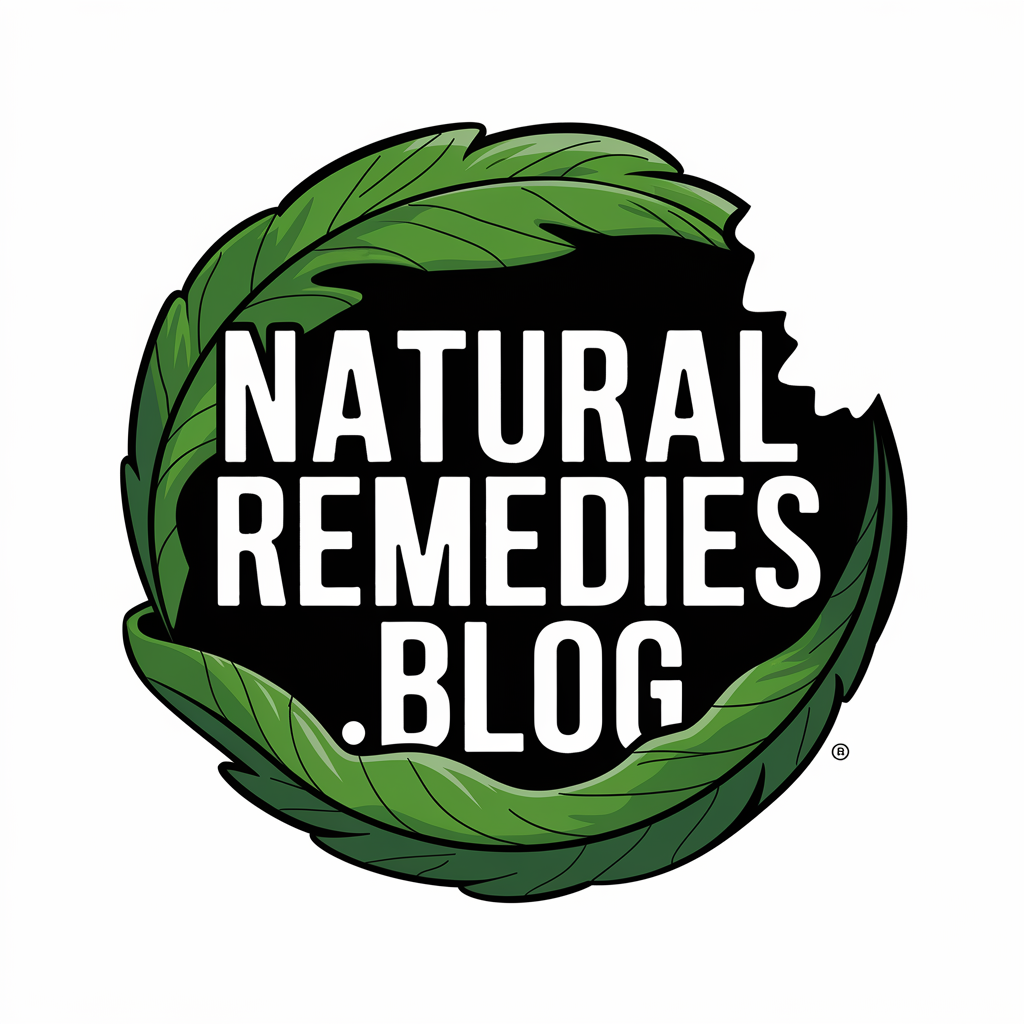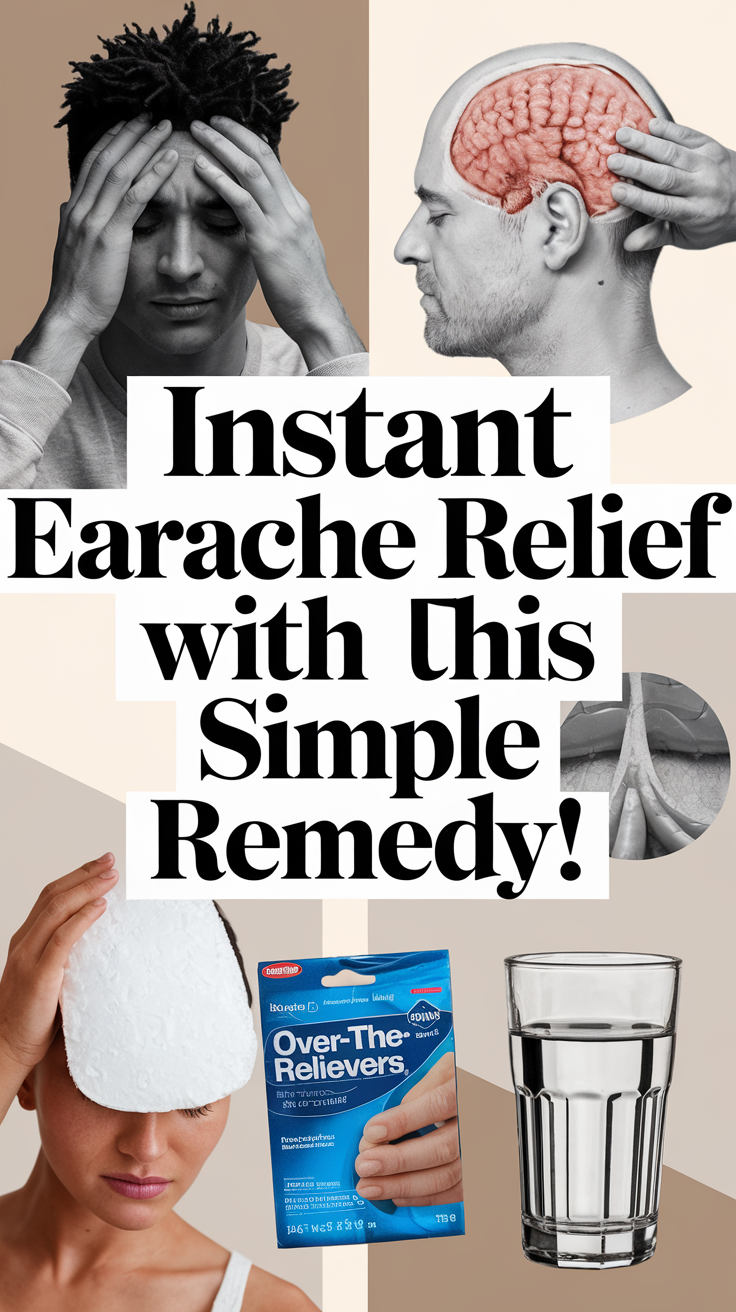Instant Earache Relief With This Simple Remedy!
You can quickly relieve ear pain at home using warm olive oil with essential oils. Simply heat 2 tablespoons of olive oil until warm (not hot), add 2 drops of tea tree oil and 1 drop of lavender oil, then carefully place a few drops in your affected ear. You’ll feel initial relief within 15 minutes and significant improvement within an hour. While this natural remedy works for minor earaches, understanding when to seek medical attention can prevent serious complications.
Key Takeaways
-
Warm 2 tablespoons of extra virgin olive oil for 10-15 seconds until comfortable, then add tea tree and lavender oils.
-
Using a clean dropper, place 2-3 drops of the warmed oil mixture into the affected ear canal.
-
Lie with the treated ear facing upward for 15-30 minutes to allow the oil to penetrate.
-
Pain relief typically begins within 15 minutes, with significant improvement occurring within 30-60 minutes.
-
Apply a warm compress to the outside of the ear while waiting for the oil treatment to work.
Understanding the Common Causes of Earaches
Before you can effectively treat an earache, it’s important to identify what’s causing your discomfort. Like many others seeking earache remedies, adults commonly experience pain from several sources.
You might be dealing with a middle ear infection, which often occurs after a cold or flu. Pressure changes during air travel, swimming, or altitude shifts can trigger ear pain that many of us find familiar.
You’re not alone if you’ve noticed ear discomfort from excess wax buildup, sinus infections, or even tooth problems – these are all typical causes.
Sometimes, the pain stems from temporary issues like water trapped in your ear canal after swimming. Understanding these common triggers helps you choose the most effective treatment approach and know when it’s time to join others in seeking professional medical care.
Signs and Symptoms to Watch For
When experiencing an earache, recognizing specific symptoms can help you determine the severity of your condition. You’ll likely notice a sharp, dull, or burning pain inside your ear, which may worsen when lying down. Common signs include difficulty hearing, feeling pressure, and a sensation of fullness in the affected ear.
Watch for concerning symptoms that may indicate a more serious infection, such as fever, severe pain, discharge from your ear, or dizziness.
If you’re caring for a child with an earache, they might tug at their ear, become irritable, or have trouble sleeping. You may also notice balance problems or your child responding less to quiet sounds.
If these symptoms persist for more than 24-48 hours, it’s time to see your healthcare provider.
The Science Behind Ear Pain
Understanding ear pain requires knowing how your ear’s complex structure works. When pressure builds up behind your eardrum, you’ll feel discomfort or sharp pain. This often happens when fluid becomes trapped in your middle ear during infections or altitude changes.
| Ear Section | Common Pain Causes |
|---|---|
| Outer Ear | Swimming, injury, foreign objects |
| Middle Ear | Infections, pressure changes, sinus problems |
| Inner Ear | Vertigo, loud noises, neurological issues |
You’ll notice that ear pain doesn’t just affect one area – it’s all connected. Your eustachian tubes, which connect your middle ear to your throat, play a vital role in pressure regulation. When these tubes become blocked, you’re more likely to experience pain and pressure buildup, similar to what many others feel during air travel or sinus infections.
Essential Ingredients for the Natural Remedy
To create an effective natural earache remedy, you’ll need several key ingredients commonly found in most households. These essential items include garlic cloves, which contain natural antibacterial properties, and extra virgin olive oil, which helps soothe inflammation.
You’ll also want to have apple cider vinegar on hand for its healing properties.
Make sure you’ve got a clean dropper for application, a small glass bowl for mixing, and a strainer to separate the liquid from solid ingredients.
If you’re planning to enhance the remedy’s effectiveness, keep some fresh ginger root and mullein flowers in your pantry – both are known for their pain-relieving qualities.
Don’t forget to stock up on cotton balls, which you’ll need to keep the mixture in place once applied.
[DIRECTIONS]:
Step-by-Step Preparation Guide
Following these simple steps will confirm you create an effective earache remedy safely at home.
First, wash your hands thoroughly and gather all ingredients on a clean surface. Pour 2 tablespoons of extra virgin olive oil into a small, microwave-safe glass bowl.
Heat the oil for 10-15 seconds until it’s warm but not hot. You’ll want to test it on your inner wrist to verify it’s at body temperature.
Add 2 drops of tea tree oil and 1 drop of lavender oil to the warm olive oil, then stir gently with a clean spoon. Let the mixture cool slightly if needed.
Transfer the blend to a clean dropper bottle using a small funnel. Label your bottle with the date and contents.
How to Apply the Treatment Safely
Safe application of this earache remedy requires careful attention to several key steps.
First, verify your hands are thoroughly clean and the dropper is sterile. You’ll want to warm the solution to body temperature by holding the bottle in your palm for 2-3 minutes – nobody likes cold drops in their ear!
Lie on your side with the affected ear facing up. Gently pull your outer ear upward and back to straighten the ear canal. Place 2-3 drops into the ear canal, then stay in position for 5 minutes to let the solution work its magic.
Place a cotton ball loosely in your ear to prevent leakage. Repeat the process up to three times daily, just like thousands of others who’ve found relief with this trusted method.
Expected Relief Timeline
Once you’ve properly applied the treatment, relief typically begins within 15-30 minutes. You’ll notice a gradual reduction in pain and pressure as the remedy takes effect. Like many others who’ve tried this solution, you’ll experience different stages of relief.
| Time Period | What You’ll Feel | Next Steps |
|---|---|---|
| 0-15 min | Initial warmth | Stay still |
| 15-30 min | Pain decreasing | Rest quiet |
| 30-60 min | Pressure easing | Normal activity |
| 1-2 hours | Complete relief | Monitor symptoms |
If your pain persists beyond 2 hours after treatment, you’re not alone – some people need a second application. For lasting relief, you may want to repeat the treatment every 4-6 hours during the first day, just like thousands of others who’ve found success with this remedy.
Alternative Home Treatment Options
Several natural remedies can provide relief from earache discomfort when you can’t access the primary treatment.
You’ll find that warm olive oil drops, placed gently in the affected ear, can soothe pain effectively. Similarly, a warm compress held against your ear offers quick comfort and reduces inflammation.
Try garlic oil, known for its natural antibacterial properties, by warming a few drops before applying them to your ear canal.
You can also create a paste with crushed basil leaves and apply it around (not inside) your ear.
Many of us have found success with apple cider vinegar diluted with warm water as ear drops. Remember to drain your ear afterward by tilting your head to the side.
Preventive Measures for Future Episodes
Taking proactive steps to prevent future earaches will save you considerable discomfort and potential medical expenses.
You’ll want to keep your ears dry and clean by thoroughly drying them after swimming or bathing. Consider using earplugs during water activities, especially if you’re prone to infections.
Maintain strong immune health by getting enough sleep, eating a balanced diet, and staying hydrated.
You’re also protecting yourself by avoiding secondhand smoke and managing allergies that can lead to ear inflammation.
Don’t insert objects into your ears, including cotton swabs, which can damage the ear canal and push wax deeper.
If you’re a frequent flyer, try chewing gum during takeoff and landing to regulate ear pressure.
Regular hand washing will help you avoid catching upper respiratory infections that often precede earaches.
Best Practices for Ear Health
While maintaining good ear health might seem straightforward, it requires consistent attention to daily habits. You’ll want to make ear care part of your daily routine, just like brushing your teeth or washing your face.
| Daily Practices | Benefits |
|---|---|
| Keep ears dry | Prevents bacterial growth |
| Clean outer ear only | Maintains natural wax balance |
| Use earplugs when needed | Protects from loud noises |
Remember that your ears are delicate instruments that need gentle care. Don’t insert cotton swabs or other objects into your ear canal – they can cause damage and push wax deeper. Instead, let your ears clean themselves naturally, and visit your doctor if you notice any unusual symptoms like persistent pain or hearing changes.
Common Mistakes to Avoid
People often make well-intentioned but harmful mistakes when trying to remedy earaches. You’ll want to avoid inserting cotton swabs deep into your ear canal, as this can push wax further in or damage your eardrum.
Don’t use alcohol or hydrogen peroxide without your doctor’s approval, as these can irritate your ear canal.
Many of us make the mistake of using hot or cold compresses that are too extreme in temperature. Stick to lukewarm temperatures to prevent discomfort or injury.
Another common error is ignoring persistent ear pain, hoping it’ll go away on its own. If your earache lasts more than 48 hours, you should see a healthcare provider.
Also, never use eardrops meant for someone else, as their condition might be different from yours.
Supporting Treatments and Lifestyle Changes
Several lifestyle adjustments can support your ear’s natural healing process.
Keep your head elevated while sleeping by using an extra pillow to help drain fluid from your ears. Stay hydrated by drinking plenty of water, and avoid caffeine and alcohol, which can worsen inflammation.
If you’re a smoker, take this opportunity to quit, as smoking can irritate your ears and slow healing.
You’ll also want to protect your ears from harsh temperatures and wind. Wear a hat or earmuffs in cold weather, and avoid swimming until your ear feels better.
Try gentle neck exercises to improve lymphatic drainage and reduce pressure.
Remember to manage your stress levels through meditation or gentle yoga, as stress can impact your body’s ability to heal effectively.
When Home Remedies Aren’t Enough
Home remedies can provide relief for many ear discomforts, but certain symptoms demand immediate medical attention. If you’re experiencing severe pain, high fever, discharge from your ear, or symptoms that last more than a few days, it’s time to see your doctor.
Don’t wait to seek help if you notice facial weakness, dizziness, or a sudden loss of hearing. These could indicate a more serious condition that requires professional treatment.
Like many of us who’ve dealt with ear problems, you’ll want to protect your hearing and overall health. Your doctor can properly diagnose the underlying cause and prescribe appropriate treatments, such as antibiotics for bacterial infections or specialized medications.
Understanding Pain Patterns
When you’re experiencing ear pain, understanding its patterns can help identify the underlying cause.
You’ll notice that ear infections often cause constant, throbbing pain that worsens when lying down. Changes in air pressure typically create sharp, sudden discomfort during flights or elevation changes.
Pay attention to whether your pain occurs in specific situations. Swimming-related ear pain usually starts after water exposure and feels like a dull ache.
If you’re noticing pain while chewing or yawning, it might indicate temporomandibular joint (TMJ) issues. Sharp, shooting pains that come and go could signal nerve irritation.
Track when your pain intensifies and what provides relief. These details will help you and your healthcare provider determine the most effective treatment approach for your specific situation.
Risk Factors and Complications
People with weakened immune systems face a higher risk of developing ear infections and complications.
If you’re prone to allergies, frequent colds, or have chronic respiratory conditions, you’re also more likely to experience earaches. Swimming, living in high-altitude areas, or exposure to secondhand smoke can increase your vulnerability too.
When left untreated, your earache might lead to serious complications. You could develop hearing loss, speech delays (especially in young children), or a ruptured eardrum.
In rare cases, the infection may spread to nearby tissues, causing mastoiditis – an infection of the bone behind your ear. That’s why it’s essential to address ear pain promptly.
If you notice persistent symptoms, fever, or discharge, don’t hesitate to seek medical attention.
Medical Treatment Options
Medical professionals offer several effective treatments for persistent ear pain and infections. Your doctor might prescribe antibiotics if you’re dealing with a bacterial infection, though they won’t help with viral causes.
For immediate pain relief, you can get prescription ear drops that contain pain-relieving medications and anti-inflammatory agents.
When you visit your healthcare provider, they’ll likely examine your ear with an otoscope to determine the best course of action. If you’re experiencing severe symptoms, they may recommend decongestants or antihistamines to reduce fluid buildup.
In cases where you have recurring ear infections, your doctor might suggest placing tiny tubes in your ears to help with drainage.
Recovery and Aftercare Tips
After receiving treatment for an earache, proper aftercare plays an important role in your recovery.
You’ll want to keep your ear dry and clean, avoiding water exposure during showers by using earplugs or cotton balls coated with petroleum jelly.
Rest is vital – take it easy for a few days and sleep with your affected ear facing up.
If you’ve been prescribed antibiotics, complete the entire course even if you’re feeling better. You can continue using warm compresses to manage any lingering discomfort.
Stay alert for warning signs like fever, increased pain, or drainage. If these symptoms appear, contact your healthcare provider right away.
Remember to schedule a follow-up appointment to guarantee your ear has healed properly and to prevent future episodes.
Long-term Prevention Strategies
While proper recovery helps resolve current earaches, implementing preventive measures can help you avoid future episodes altogether. You’ll want to adopt these proven strategies that many ear health enthusiasts swear by.
| Prevention Strategy | Daily Action | Benefits |
|---|---|---|
| Keep Ears Dry | Use swim caps, dry ears after swimming | Prevents bacterial growth |
| Avoid Irritants | Clean earbuds, limit cotton swab use | Reduces inflammation risk |
| Boost Immunity | Take vitamin C, sleep well | Fights ear infections |
Make these practices part of your routine to join the ranks of those who rarely experience ear pain. Remember to monitor air pressure changes during flights by yawning or chewing gum, and don’t smoke or expose yourself to secondhand smoke, as it can irritate your ear canal and increase infection risk.
Frequently Asked Questions
Can I Use This Remedy While Taking Antibiotics for an Ear Infection?
You’ll want to check with your doctor before combining any remedies with your antibiotics. It’s important to avoid interactions that could affect your treatment’s effectiveness.
Is This Remedy Safe to Use During Pregnancy?
You shouldn’t try any ear remedies during pregnancy without consulting your doctor first. Even natural solutions can affect you differently while you’re expecting, so let’s keep you and baby safe.
How Often Can Children Use This Treatment in a Single Day?
You’ll want to limit children’s use to 3-4 times per day. If your little one’s earache persists beyond 24 hours, it’s best to check with your pediatrician for proper treatment.
Does This Remedy Work for Swimmer’s Ear Specifically?
While you can use this home treatment for swimmer’s ear, it’s best to check with your doctor first since swimming-related ear infections often need specific medical treatments to prevent complications.
Can Pets With Ear Problems Benefit From This Natural Treatment?
You shouldn’t use human ear remedies on pets, as their ear canals are different. Instead, take your furry friend to a vet for proper treatment that’s safe for them.








